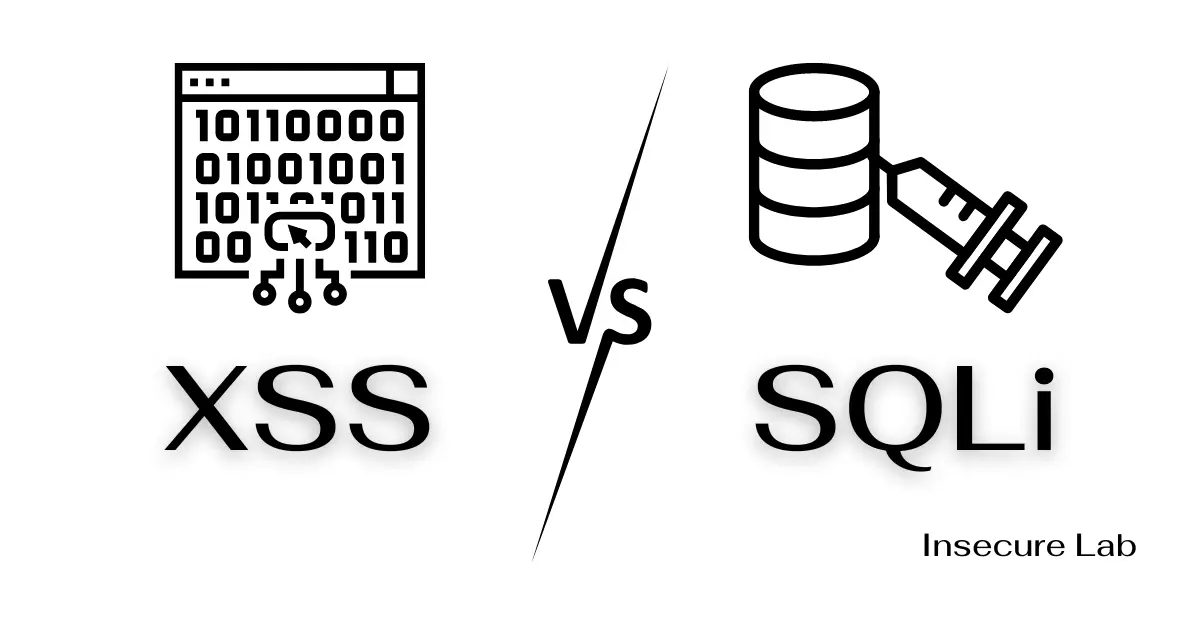Table of Contents
In this comprehensive comparison of Cross Site Scripting vs SQL Injection attacks (XSS vs SQL Injection) we will explore the key differences between them on various aspects of cybersecurity.
XSS and SQL Injection
Cross-Site Scripting (XSS) and SQL Injection are two common types of input validation attacks that pose significant risks to the security and integrity of web applications.
Understanding their differences and similarities is crucial for developers, security professionals, and website administrators to implement effective security measures and protect against potential attacks.
Cross-Site Scripting (XSS)
Cross-Site Scripting (XSS) is a security vulnerability in web applications where attackers inject malicious scripts into web pages viewed by other users, enabling them to steal data, manipulate content, or execute actions in the victim’s browser context. XSS comes in various forms, including stored, reflected, and DOM-based XSS, and can have serious consequences if not properly mitigated.
SQL Injection (SQLi)
SQL injection is a security vulnerability in web applications that occurs when malicious users input specially crafted SQL code into input fields, tricking the application into executing unintended database queries. This can lead to unauthorized access, data theft, and potential manipulation of the database, posing significant risks to data security.
Cross Site Scripting vs SQL Injection
Let’s compare these two security vulnerabilities based on various aspects:
Difference Between XSS and SQL Injection
Below table provides an overview of the key differences between SQL Injection and XSS attacks on various aspects.
| Aspect | Cross-Site Scripting (XSS) | SQL Injection (SQLi) |
|---|---|---|
| Definition | XSS is a type of security vulnerability where attackers inject malicious scripts into web pages viewed by other users. | SQL Injection is a type of security vulnerability where attackers inject malicious SQL code into a web application’s database query. |
| Attack Target | Targets the end-users of a website or web application. | Targets the web application’s database and backend system. |
| Vulnerable Component | Typically occurs in input fields, comments, and URLs. | Generally found in input fields, search bars, and login forms. |
| Exploitation Impact | Can lead to theft of sensitive user data, session hijacking, phishing, defacement of websites, and more. | Can result in unauthorized access to the database, data manipulation, data theft, and even complete system compromise. |
| Attack Complexity | Can be relatively easy to execute, and tools are available for automated attacks. | May require more technical expertise to exploit effectively. |
| Data Exposure | Exposes user data and session information. | Exposes sensitive data stored in the database. |
| Server-side Interaction | Limited server-side interaction, mainly client-side attack. | Directly interacts with the backend database system. |
| Protection Mechanisms | – Input validation and output encoding. – Setting HttpOnly and Secure flags for cookies. – Content Security Policy (CSP) headers. | – Parameterized queries and prepared statements. – Principle of Least Privilege for database access. – Web Application Firewall (WAF) for filtering attacks. |
| Prevalence | Remains one of the most common web application vulnerabilities. | Still prevalent in many web applications despite awareness. |
| Mitigation Difficulty | Moderate to easy to mitigate with proper coding practices and security measures. | Mitigating SQL Injection can be challenging, especially in legacy applications. |
| Impact Severity | Can range from low to high, depending on the context and data accessed. | Severity can be high, leading to data breaches and system compromise. |
| Responsible Disclosure | White hat hackers and security researchers often report XSS vulnerabilities responsibly. | White hat hackers and security researchers follow responsible disclosure practices. |
| Legal Implications | XSS attacks can lead to legal consequences for attackers. | SQL Injection attacks can result in legal actions against perpetrators. |
| Importance of Prevention | Crucial for protecting user data and maintaining website credibility. | Vital for safeguarding sensitive data and ensuring application integrity. |
Conclusion
Cross-Site Scripting (XSS) and SQL Injection are significant security risks for web applications. While XSS targets users and manipulates client-side behavior, SQL Injection aims to exploit the application’s backend database system. Proper mitigation and prevention strategies, such as input validation, output encoding, and the use of prepared statements, are vital to address these vulnerabilities effectively.
Regular security audits, vulnerability scanning, and continuous security awareness training are crucial in the ongoing battle against these cyber threats.

